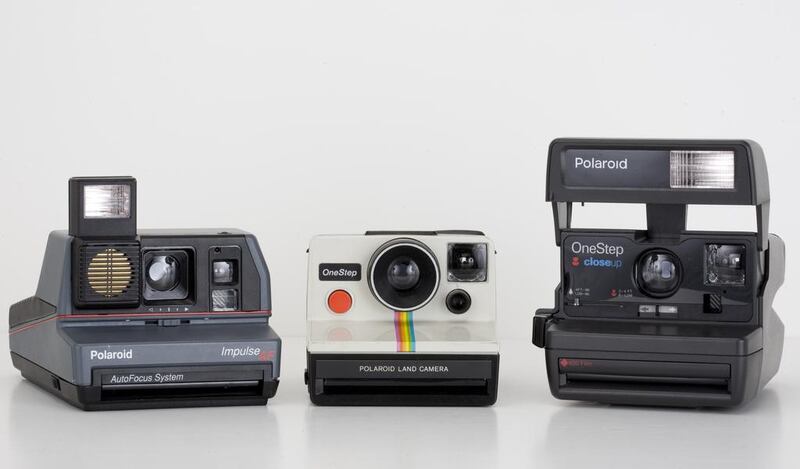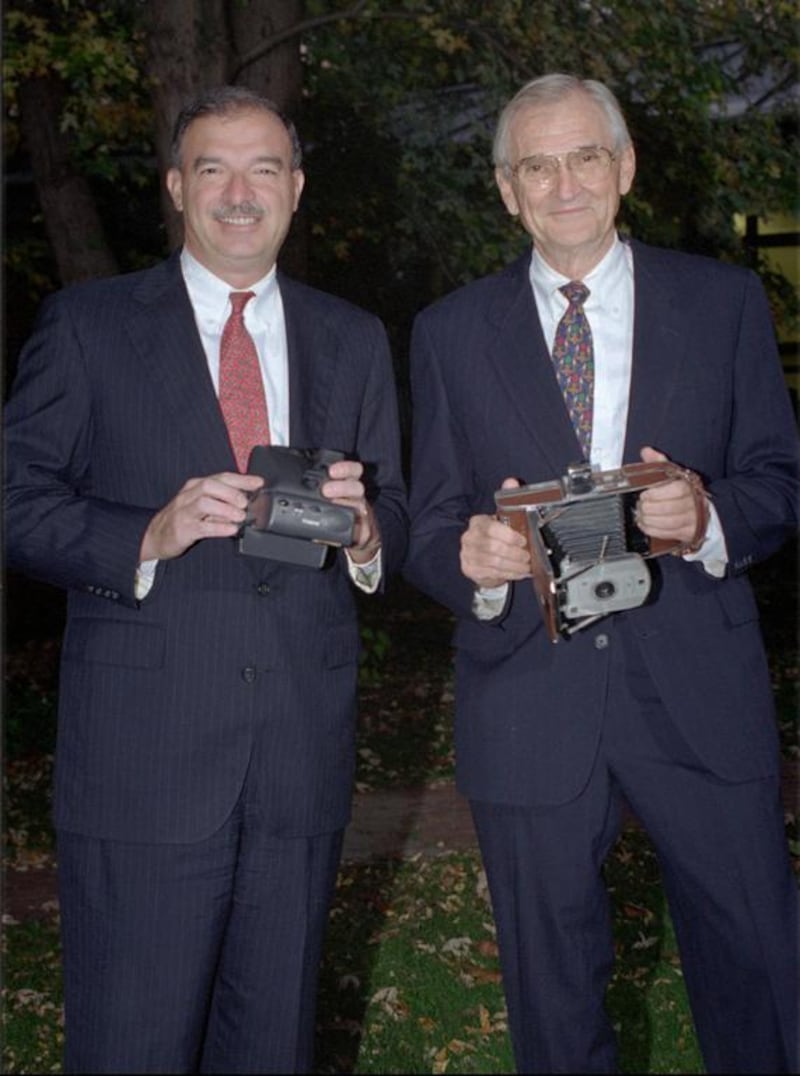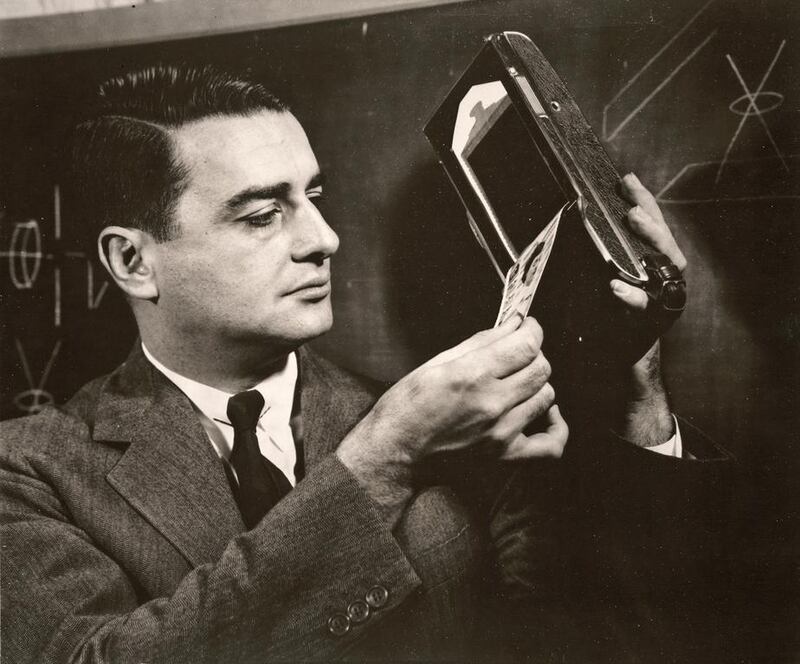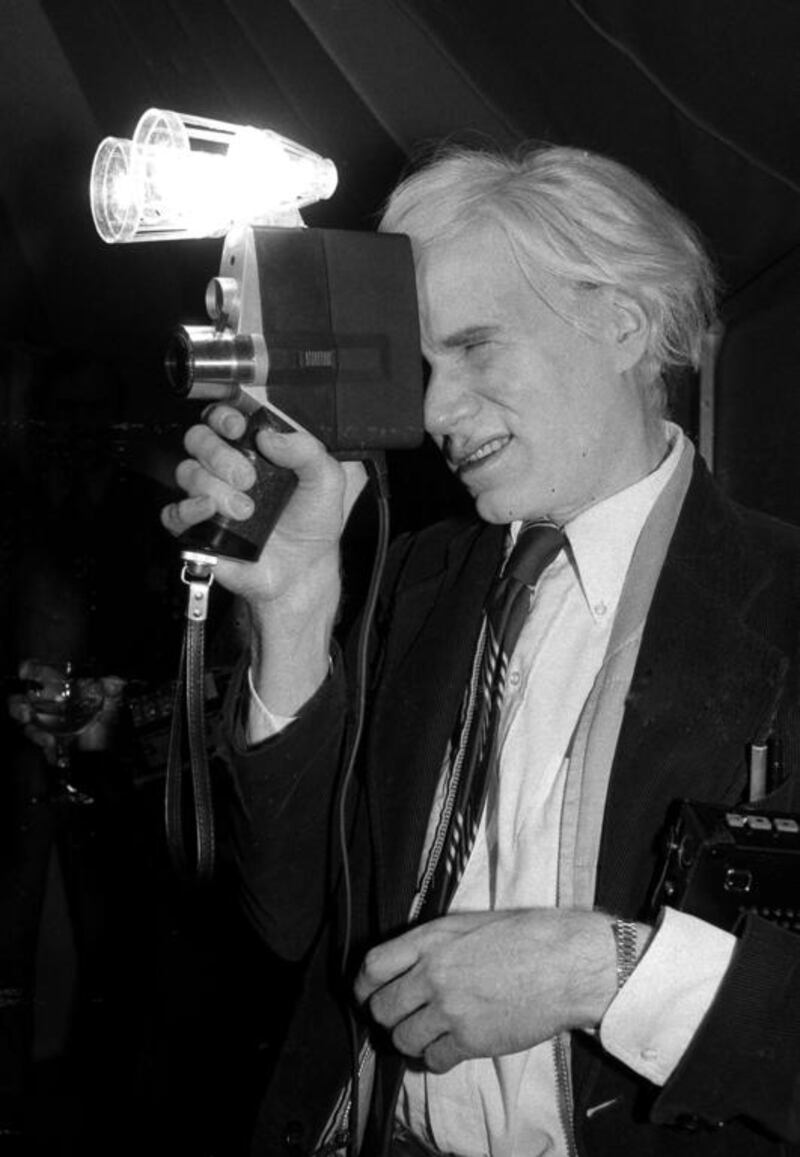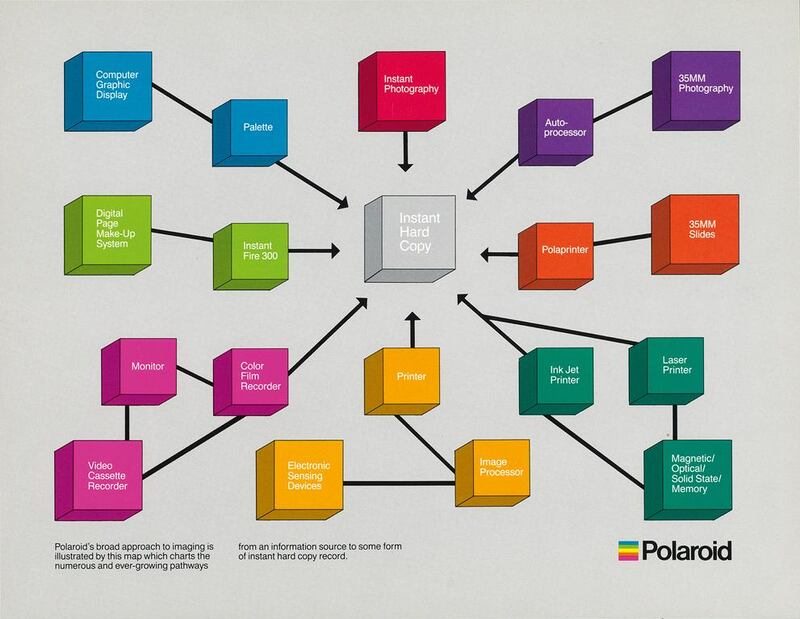Polaroid saw the future but could not harness it. The company, once an innovator, and deeply committed to research, was nonetheless left behind by the rise of digital photography. The story is told in our third and final excerpt from The Camera Does the Rest: How Polaroid Changed Photography, by Peter Buse.
The excerpt
In the summer of 1993, when Polaroid released the Captiva camera in the United States, Polaroid chairman Mac Booth announced that it was the last such camera the company would develop. He meant by this that Polaroid would never again dedicate a huge research budget and unlimited laboratory time to a single photographic project that took many years to complete. Captiva, which had been in the works at Polaroid since the late 1980s under the code name Joshua, was the last in the line. Its development followed the pattern that had been long established at Polaroid for new products: massive investment; long run-in time; thorough-going innovation in optics, chemistry and electronics; and a strong set of new patents to protect a camera that had no direct equivalent on the market. It fulfilled, in other words, the criteria set by Edwin Land for Polaroid’s inventors— that they should seek not to imitate or compete directly with existing products, but rather to make “things that people didn’t know they wanted until they were available”.
This strategy nearly crippled Polaroid financially in the early 1970s because the company had to build an entire new infrastructure of factories to support manufacture of the SX-70, a camera that eventually paid handsome dividends when cheaper models went on sale. Things did not work out so well in the case of Polavision, Polaroid’s instant movie system, which debuted to much fanfare in 1977, failed to compete against video and Super-8, and was written off to the tune of $68 million. The principle was the same in both cases: Polaroid made new technologies, based on original research and invention, and if it took time, so be it. In accounts of the company’s history, this outlook is usually exemplified by the story of Howard Rogers, the lead scientist in the development of Polacolor. Just as the first instant sepia prints were being made in 1947-48, Land set Rogers the problem of how to make instant film in colour, asking him to sit and watch the work of the sepia lab for as long as he needed before tackling the entirely different problem of colour. Depending on the account, Rogers spent two years or several years simply observing in Land’s lab before getting down to the business of actually trying to produce the first prototype film. Polacolor was not perfected until 1963. It was this ethos of deep research that Booth alluded to in his statement, and which by implication had become too slow for a company that was trying to diversify in the face of a shrinking demand for instant film. But old habits died hard at Polaroid, and the research team for Captiva was obviously proud of its achievements with the new camera. When it was introduced at Photokina ’92 in Cologne the press kit accompanying the launch was stuffed with documents detailing all the new patent-worthy features crammed into the device.
The Captiva was a single-lens reflex camera, and had the look of the compact 35mm SLRs popular in the late 1980s and early 1990s.
A folding camera that expanded for picture-taking, it produced rectangular “wallet-size” prints, smaller than the iconic SX-70, at around 3 x 2 inches. The same Polaroid Type 500 film was later used for the much cheaper Joycam. Shutter speeds, lens opening, and automatic fill-in flash were all controlled by a microcomputer designed especially for the camera. The Captiva’s most striking design feature was its picture storage chamber, or “pouch”, as it was described in some reviews. All of Polaroid’s consumer cameras since the SX-70 had noisily ejected the print from the camera into the open air, to be disposed of by the awaiting hand of photographer or photographed.
__________
The Camera Does the Rest: How Polaroid Changed Photography
■ Read the previous excerpt: Polaroid's approach was one of a kind
__________
But the Captiva kept the developing print inside the camera, sending it on a 180-degree journey through the machine’s guts, leaving it snug in the pouch facing outwards from the bottom of the camera (or the back if the camera was closed). Up to ten prints could be stored in this fashion, or removed at any time. The engineering is elegant, the route taken by the print improbable, but to look now at promotional images of the Captiva, one would never suspect what went on inside it. This is because the side of the Captiva containing a developed print looks at first glance no different from any number of affordable consumer digital cameras with LCD displays.
The first preview screens in digital cameras date from 1995, three years after the Captiva’s introduction, but they were not standard gear in amateur cameras until the following decade. In retrospect, the all-too-analogue pouch of the Captiva has the look of an illustrative model, a cardboard mock-up to be discarded once the technology is fully realised. An uncanny double of cameras to come, the Captiva contains in miniature the story of Polaroid’s relation to the new digital technologies that displaced it: not an outright substitution of new for old, but an incomplete and yet oddly prescient anticipation in the old of the new.
Polaroid was more than alert to advances in what was then called “electronic imaging”, and worked right through the 1980s under the assumption that consumer ESCs (Electronic Still Cameras) would one day come to market, and that they therefore needed to be actively exploring the area. As early as 1980, when the OneStep was the world’s best-selling camera, and Polaroid was reaping the benefits of simplified SX-70 technology, the company applied for patents for an electronic camera. It was based on a CCD (charge-coupled device) that would become a standard feature in digital cameras, but was to use tape for data storage. For this electronic camera Polaroid foresaw “a large luminescent screen at the back [ ...] about the size of the finished picture” where the user “can preview his picture [ ...] and decide to print it, reject it or store it”; in other words, a preview screen of the kind later modelled in the Captiva and eventually found in most digital cameras.
In 1984 Polaroid commissioned a 63-page report entitled “Birth of the Electronic Image Processing Industry: The Road to Electronic Photography.” In a section entitled “Reasons to Take ESP Products Seriously,” the report stated in no uncertain terms that “the direction of amateur still photography is (electronic) image processing, TV display, optical disk storage and optional hard copy output.” By the late 1980s, when Polaroid had a foothold in the floppy diskette market and was producing a full range of digital scanners, but still no Electronic Still Camera, the annual reports had begun to use the language of “convergence” that was to become popular with new media theorists. The 1986 report observed that “electronic image recorders, computers and cameras that expose silver halide seem to be converging upon one another” and the 1989 report claimed that “as photochemistry, electronics and computing technology converge, the art and science of imaging are evolving with astonishing rapidity. Polaroid is in the forefront of this evolution.”
The company had set up a special research unit devoted to electronic imaging in 1981. And yet, in spite of this head start and huge experience in the photographic industry, Polaroid did not produce its first consumer digital camera until 1996, by which time there were over forty competing firms already selling digital cameras.
Why did Polaroid take so long to bring out a consumer digital camera, especially when it was promising to do so year on year? The most obvious answer is that they could not find a way to make digital photography as lucrative as conventional film, where the profit margin on each film cartridge was always very high. This bottom line argument is compelling, but there were other factors at work. For instance, the Polaroid labs produced digital camera prototypes before 1996, but the evidence suggests that they were always dissatisfied with the resolution of the images obtained. Polaroid traditionally prided itself on the high resolution of its silver halide films, but this view was not always shared by the wider photographic community, where Polaroid film was often reputed, unfairly or not, to have lower photographic values. In other words, this was a sensitive issue at Polaroid, and as long as the resolution of digital images was inferior to chemically based films, it hesitated to bring its prototypes to market.
Postscript
Sales of instant film dried up in the 1990s. In the end Polaroid Corp filed for bankruptcy protection on October 12, 2001. Today, though, Polaroid photography has been revived thanks to the Impossible Project, a Dutch-Australian venture that bought the last remaining Polaroid film factory in 2008. Its film is expensive but has found a niche market of nostalgists and artists.
Reprinted with permission from The Camera Does the Rest: How Polaroid Changed Photography, by Peter Buse, published by the University of Chicago Press. © 2016 by The University of Chicago. All rights reserved
business@thenational.ae
Follow The National's Business section on Twitter
